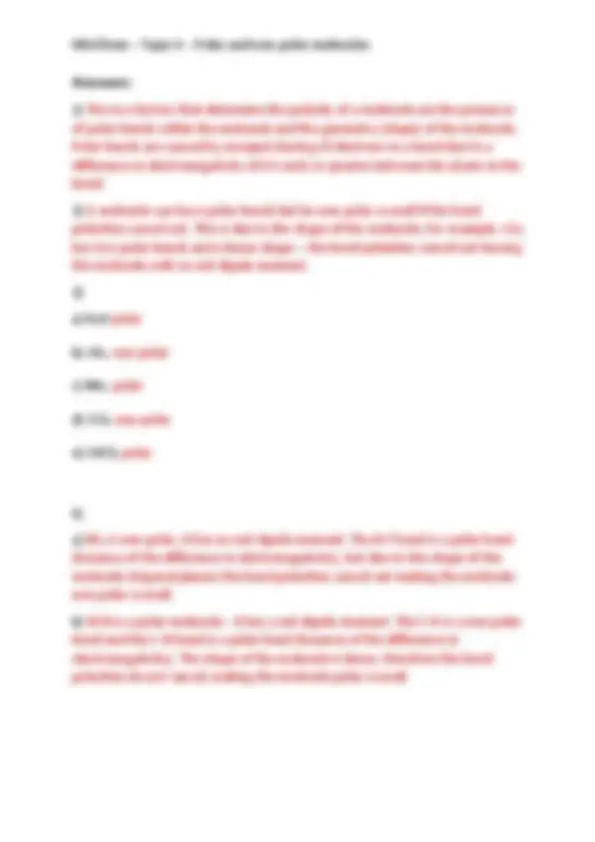



Study with the several resources on Docsity

Earn points by helping other students or get them with a premium plan


Prepare for your exams
Study with the several resources on Docsity

Earn points to download
Earn points by helping other students or get them with a premium plan
Community
Ask the community for help and clear up your study doubts
Discover the best universities in your country according to Docsity users
Free resources
Download our free guides on studying techniques, anxiety management strategies, and thesis advice from Docsity tutors
MSJChem – Topic 4 – Polar and non-polar molecules ... 3) Classify the following molecules as polar or non-polar. ... non-polar. a) Boron trifluoride (BF3).
Typology: Study notes
1 / 2

This page cannot be seen from the preview
Don't miss anything!


MSJChem – Topic 4 – Polar and non-polar molecules
Describe the two factors that determine the polarity of a molecule.
Explain how a molecule can have polar bonds but overall have no net dipole moment (non-polar).
Classify the following molecules as polar or non-polar.
a) H 2 O
b) CH 4
c) NH 3
d) CCl 4
e) CHCl 3
a) Boron trifluoride (BF 3 ) b) Hydrogen cyanide (HCN)
MSJChem – Topic 4 – Polar and non-polar molecules
The two factors that determine the polarity of a molecule are the presence of polar bonds within the molecule and the geometry (shape) of the molecule. Polar bonds are caused by unequal sharing of electrons in a bond due to a difference in electronegativity of 0.5 units or greater between the atoms in the bond.
A molecule can have polar bonds but be non-polar overall if the bond polarities cancel out. This is due to the shape of the molecule, for example, CO 2 has two polar bonds and a linear shape – the bond polarities cancel out leaving the molecule with no net dipole moment.
a) H 2 O polar
b) CH 4 non-polar
c) NH 3 polar
d) CCl 4 non-polar
e) CHCl 3 polar
a) BF 3 is non-polar, it has no net dipole moment. The B-F bond is a polar bond (because of the difference in electronegativity), but due to the shape of the molecule (trigonal planar) the bond polarities cancel out making the molecule non-polar overall.
b) HCN is a polar molecule – it has a net dipole moment. The C-H is a non-polar bond and the C-N bond is a polar bond (because of the difference in electronegativity). The shape of the molecule is linear, therefore the bond polarities do not cancel, making the molecule polar overall.